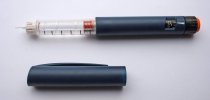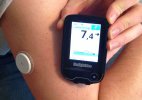I agree with you, but it hasnt stopped, also I cant get appointments at my GP for weeks, so the next appointment wouldnt be until Jan anyway. NHS is in an awful state right now, we all know why.
I have eaten some chicken and my blood sugar has gone down to 11 now from 13.1, so its still going down, so I must be producing something.
Ill be cooking and eating my tea in about an hour, the problem is I cant get it below like 10 before I have to eat again, I wont starve myself.
What should I do about this?



